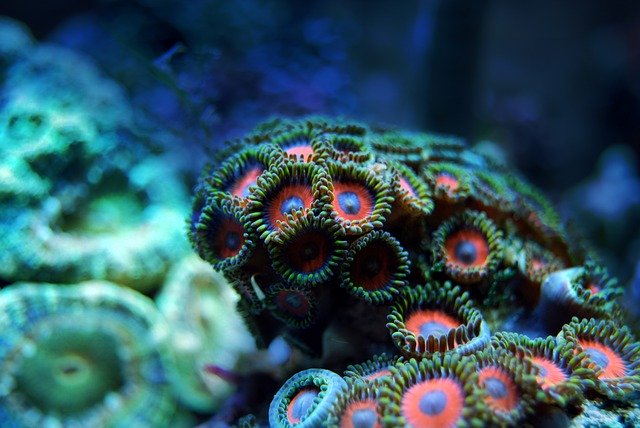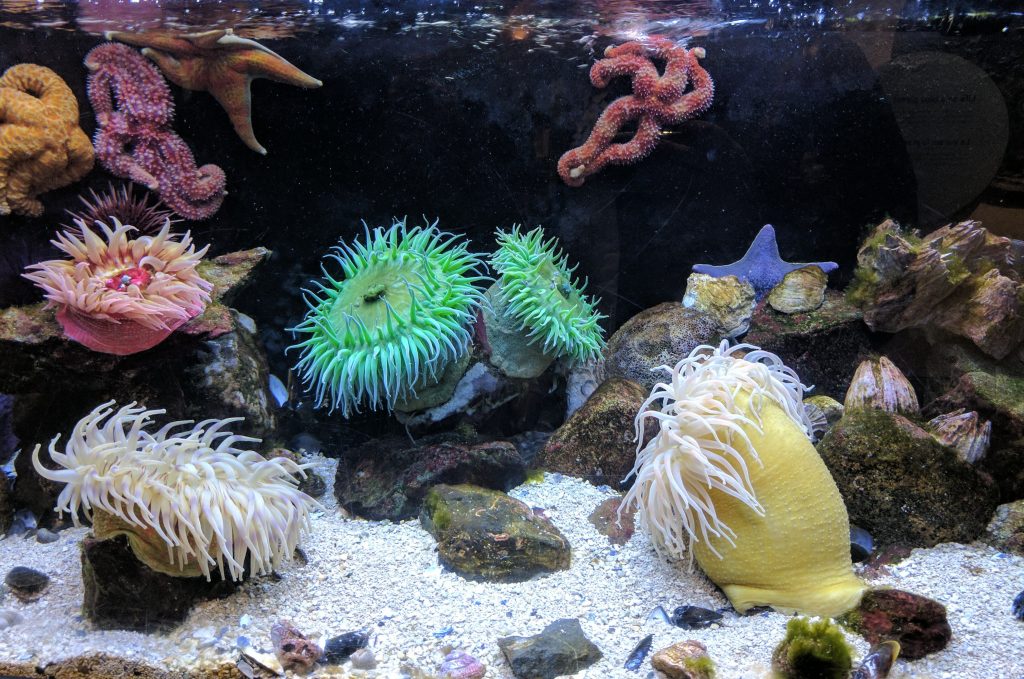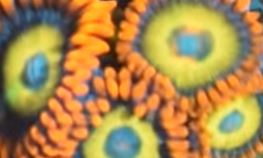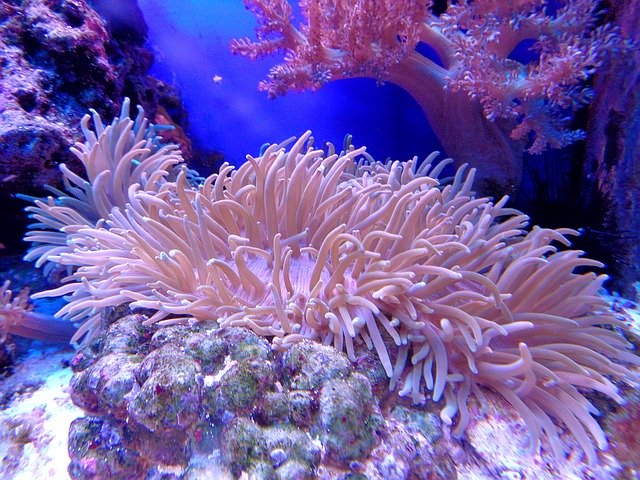
What Are The Best Corals For Beginners

Looking for the best corals for beginners? We will cover everything that you need to know to get you started. From which ones to get, which ones to avoid, and why choose certain corals if you are new to the hobby.
This page does not cover setting up your new marine tank, so we are assuming that your new reef tank is cycled and ready to go. This is also helpful information if you only have one or two new frags in your tank, and you are looking to add some more new ones.
Things To Consider When Buying New Corals
Some things you need to consider when choosing what to get. I know some of these are no-brainers, but we are going to cover them anyway.
- Cost
- Level of Care
- Tank Suitability
The most glaring thing that stands our when you are eyeballing new things to buy for your marine tank is cost. You browse your favorite online vendor or your local fish store and there are things ranging from $15 to hundreds of dollars. Obviously, you want to look for the lower price corals to start with. While some of the more more rare and beautiful ones are very costly, you can find some fascinating ones to get for low cost.
If you are not used to managing a tank and keeping everything stable, you could easily lose a coral in short time. This can cause frustration, and it may quickly turn you away from the hobby.
If you stay in the hobby long enough, you are bound to hear a story about some guy with a lot of money who spent thousands on his first set up and thousands on new corals only to lose most of them quickly. Don’t be that guy, well, unless you are loaded and a few thousand means nothing to you, but still, why risk killing all those corals?
When you are new to reef tanks, you want to get some that have a low level of care. Running a new tank can be time consuming at first because you don’t know what you don’t know, and experience is what can mature you as a reefer. The best ones to get starting out are frags that have a low level of care. Can you just drop them in a suitable spot right away, and are they happy? Do you want to deal with feeding them, buying a bunch of test kits and minerals?
You need to consider your tank as well. You want to have a nice home for them, and you don’t want to put frags in your tank when your not ready for them. You need to make sure you have the right size and equipment. This article does not cover equipment setup for reef tanks, but you need to understand rocks, size, flow, interactions with other tank mates. If you already have a fish that is prone to nip at certain corals, then that is something you need to consider.
Are you using cheap wave makers that are forcing too much water for certain corals that need low flow? Are your power heads adjustable. So many things in your tank can impact growth, colors, etc., and you want to make sure that you what you purchase is suitable for your tank.
Corals To Get For New Reef Tank Hobbyist
These are not listed in any order.
Zoanthids

Zoas are a very solid choice as a first purchase. If you have done any research on zoas, you have probably heard about palytoxin poisining. So we have to mention that if you have not heard or read about it. Personally, I did not have an issue with it, and my first purchase included zoas, but talk to your local fish store or online vendor if you have any concerns.
Zoas come in lots of color variations, they are inexpensive, and hardy. They also grow quickly which is a good thing because you want to have a tank full of beautiful colors and not a few frag plugs sitting on your sand bed.
Mushrooms
Mushrooms are a great starter coral, specifically Rhodactis. They are very hardy, not expensive, and they come in a lot of colors. They will spread a nice carpet of growth. Do keep in mind that they are semi-aggresive, so if you have a very small tank, keep that in mind. Although, if you are new to reefing, we recommend a larger tank as it will be a little more stable while you are learning.
A Toadstool Leather coral is also something to consider. They come in different shades, they are easy to care for, and they are peaceful. It is recommended to keep that apart from other corals as they can emit a toxin that others won’t like.
Blastomussa
Blasto is an LPS. I was not too impressed with Blastos the first time I saw them, but I am glad I got one as a starter. It was the easiest one, and I had zero issues with it at all. While it may be at the upper end of beginner, I personally had no issues at all.
One of the great things about Blasto, is that is does not need a lot of flow or light, so it is easy to place on your sand bed, and if you have not purchased a good power head yet, you should be fine. You should also be able to get by on minimal quality light.
It’s peaceful and you should be able to place it around other corals which is another positive thing for newbies.
Montipora
Montipora is also at the upper side of experience on the list. Once you have a good handle on softies and LPS, a Monti is a good choice as it is one of the easiest to take care of. Some of the others listed on this list require low or moderate flow, so they are great for the lower end of your tank.
Montipora needs a medium to strong flow, so keep that in mind before purchasing. If you don’t have a quality wave maker yet, you might want to hold off on this until you can sustain a higher level of flow throughout your tank,
Candy Cane Coral
The Candy Cane (Caulastrea furcata) is a nice, easy, and peaceful coral to start with. It can be place most anywhere, and it requires medium light and moderate flow. You should also see some good growth in a correctly set up environment.
Duncan Coral
The Duncan is a solid choice for the lower part of your reef aquarium. It requires low waterflow and low-medium lighting. Most new marine tank owners should do well with this as it is inexpensive, peaceful, and it does not require expensive lighting or an expensive power head for flow.
Elegance Coral
This may be a little more expensive than some of the others, but everyone has a different budget, so this may be in your wheelhouse. If you like anemones, but don’t want something that walks around the tank, grab this little fella.
This can be a beautiful showpiece for your new reef tank, and you can drop this in your sand in the front of your tank. You may not want this if you have a small tank as it may expand and sting other corals around it.
Final Thoughts On Best Corals For Beginners

When looking for the best corals for beginners, you need to do your homework. Having a reef tank can be a very enjoyable hobby, but it can also be expensive. Understanding your tank setup, your tanks limits, etc. is the first place to start.
Once you have an understanding of your new reef tank setup, read through our list and others so that you have a better understanding of where to start. My first coral purchase included a Blasto, a Zoa, and an Acan. I have seen some people mention Acans as a good starter coral, but I had a difficult time with mine, so I cannot include it on my list.
Please comment below on what you think are the best corals for beginners.
